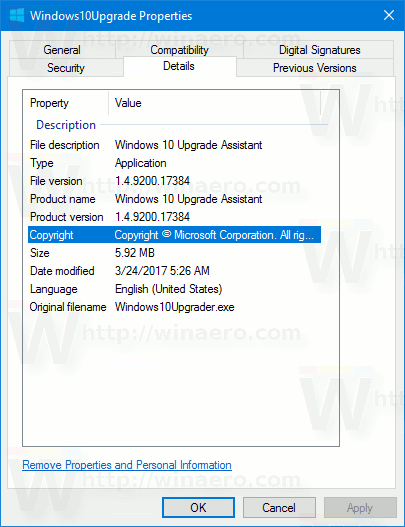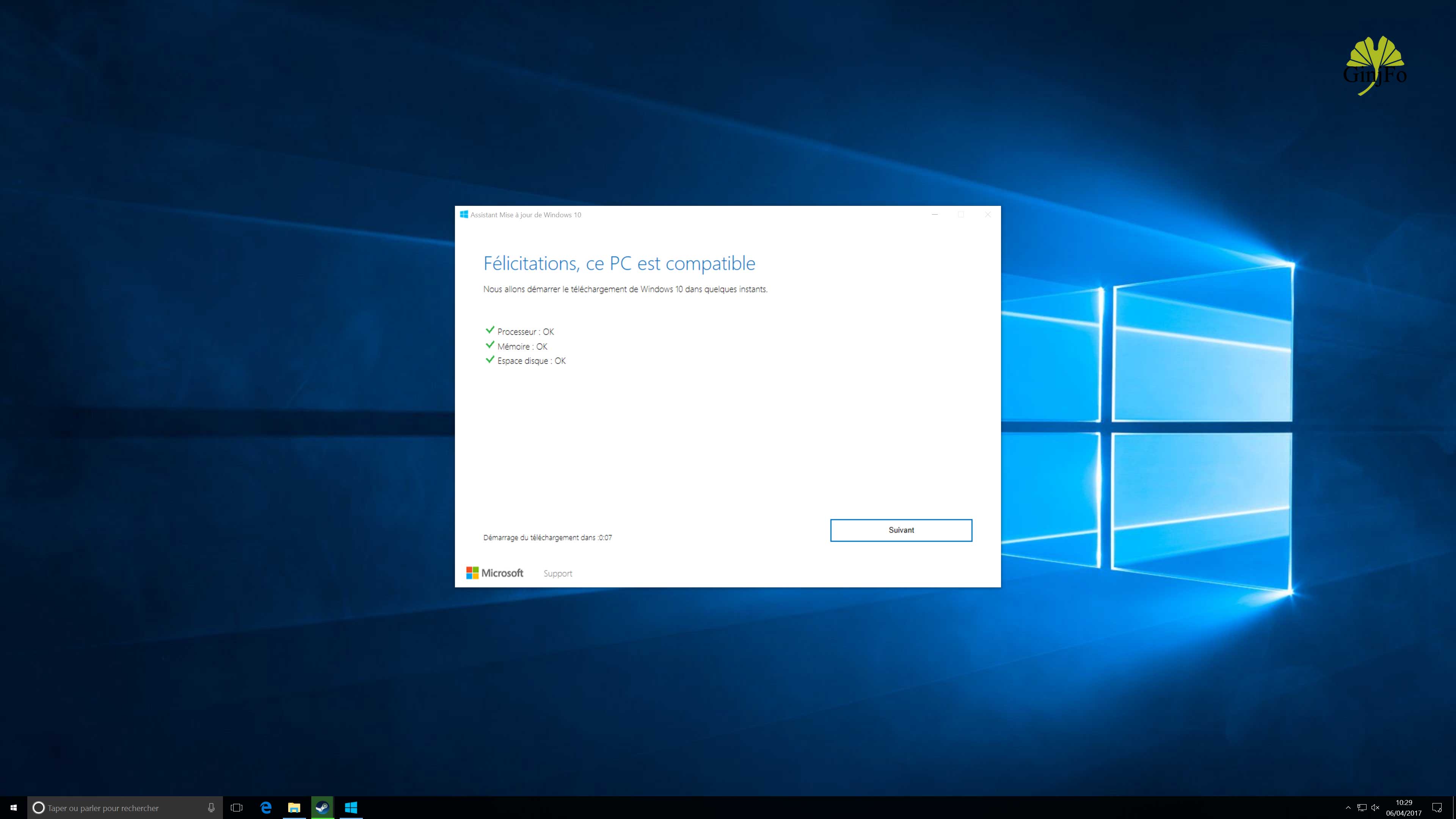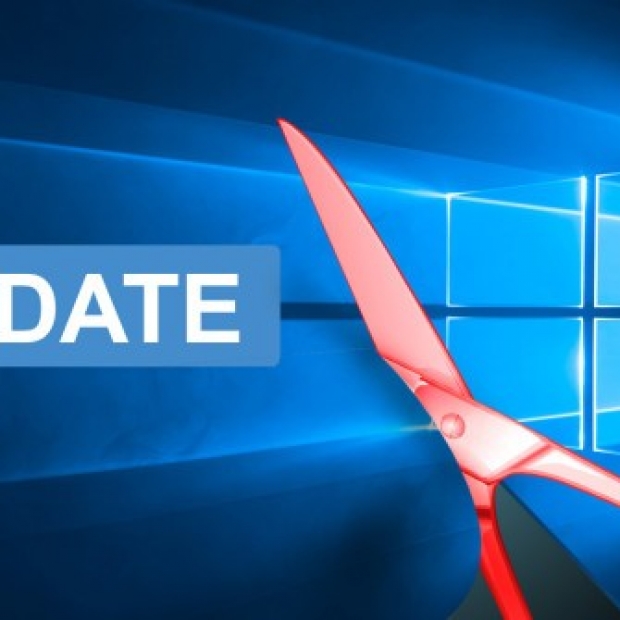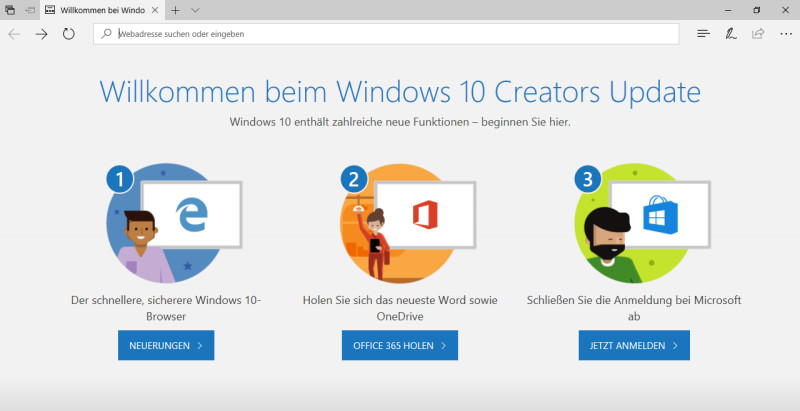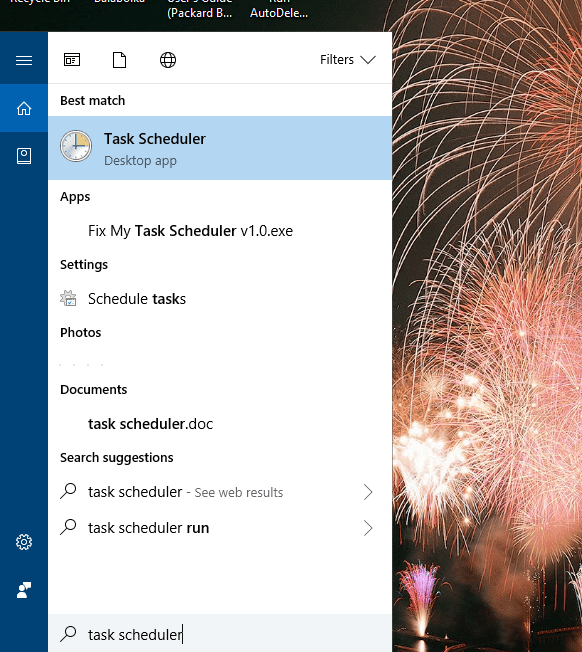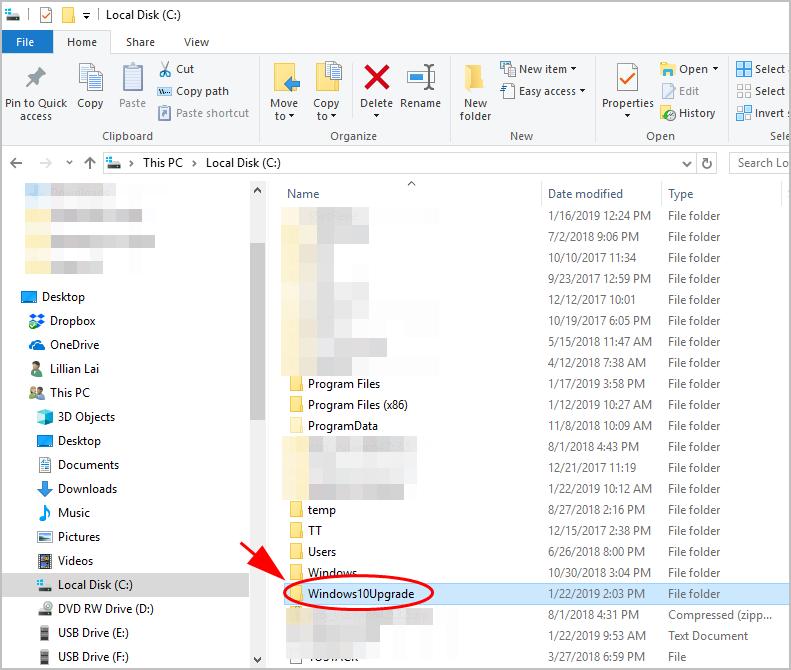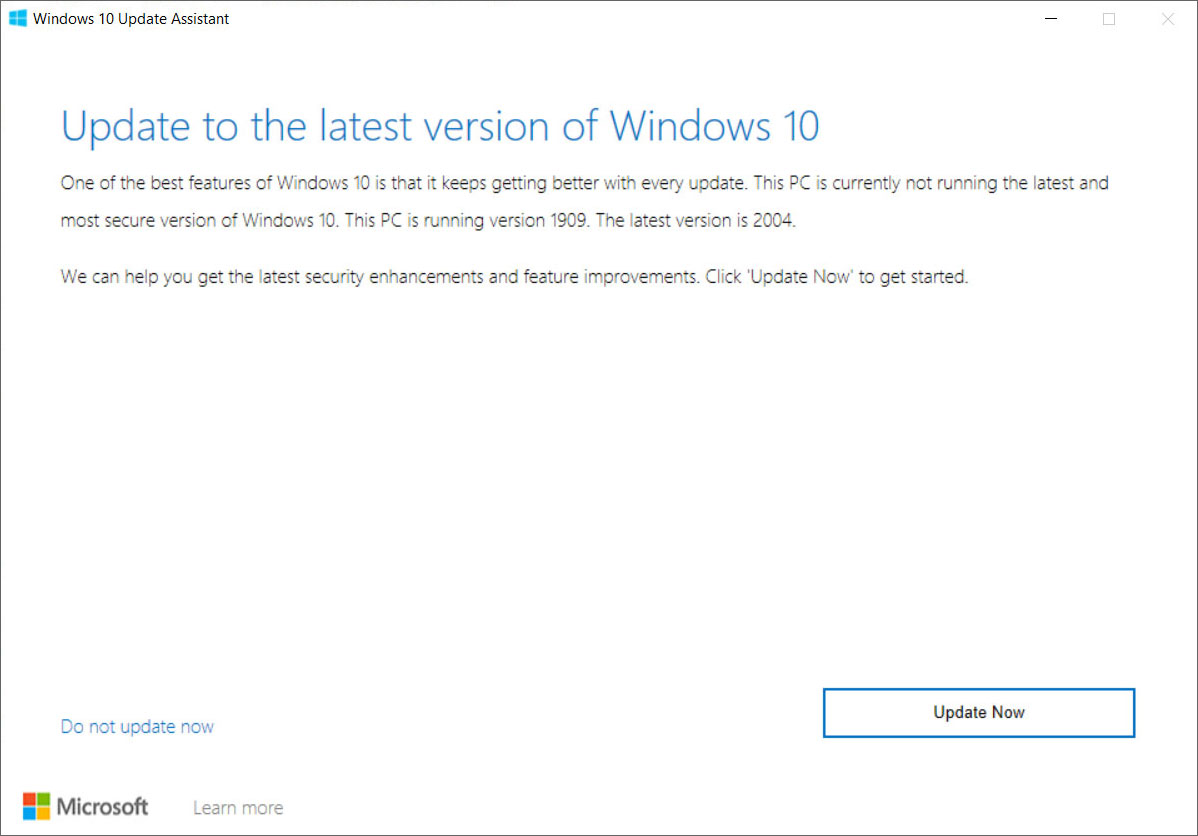Windows 11 is available as a free upgrade for compatible Windows 10 PCs, you can wait for the update to appear in the usual windows update section under settings on your computer. However, if the option isn't there yet, and you are excited to upgrade to Windows 11 now there are a couple of ways to force your computer to install it. Or even Windows 11 ISO images available for download to create installation media and perform a clean install manually.
Here this post we go through steps, How to Use Windows 11 Installation Assistant to Upgrade From Windows 10 to latest windows 11 version 21H2. Original equipment manufacturers can still ship computers without a TPM 2.0 coprocessor upon Microsoft's approval. Some third-party software may refuse to run on unsupported configurations of Windows 11. If your existing Windows 10 PC is running Windows 10 20H1 or later and meets the minimum hardware specificationsit will be able to upgrade to Windows 11. The upgrade rollout plan is still being finalized, but for most devices already in use today, we expect it to be ready sometime in early 2022.
Not all Windows 10 PCs that are eligible to upgrade will be offered to upgrade at the same time. To see if your PC is eligible to upgrade, refer to our knowledge base for a list of tested systems. Once the upgrade rollout has started, you can check if it is ready for your device by going to Settings/Windows Updates. Similar to how end users are notified when updates are available in Windows 10, end users will see an indication in the notification areas of the taskbar in the bottom right, that the upgrade is available. More information on how that is presented will be available at a later date.
Additional desktop notification options may be also be added at a later date. He also acknowledged the expansion of Microsoft Store to include more "traditional" desktop applications. If your device does not meet the new hardware requirements, the seeking experience will not be available.
On unsupported devices, Microsoft will also block the update when you use Media Creation Tool or Update Assistant tool. However, you'll be able to bypass the upgrade blocks by modifying the installation media or registry. Citing security considerations, the system requirements for Windows 11 were increased over Windows 10. While the OS can be installed on unsupported processors, Microsoft does not guarantee the availability of updates.
Windows 11 also drops support for 32-bit x86 CPUs and devices which use BIOS firmware. Before installing Windows 11, there are a couple of things that a user shall take care of. Firstly, important documents, files, applications and other data must be backed up on a separate drive or external flash storage. That being said, a user needs to head on to the Settings on Windows 10, click on Updates and Security and check for updates. If the Windows 11 update is not available to download and install there, Microsoft has also released a Windows 11 Installation Assistant. Check how to download Windows 11 using Microsoft Windows 11 Installation Assistant below.
This will not erase any of your personal files and is similar to an OTA (over-the-air) update – however, it's always advisable to have backups. Similarly, you can create a bootable USB drive or a disk image to perform a clean install. Actually installing Windows 11 is a very simple process. Once you have created installation media, you can simply launch the setup file in your flash drive, then click through the installing process.
Once the installation process is finished, you'll be running Windows 11. If you want to do it this way, it's pretty much the same as having an ISO file. As part of the minimum system requirements, Windows 11 only runs on devices with a Trusted Platform Module 2.0 security coprocessor. According to Microsoft, the TPM 2.0 coprocessor is a "critical building block" for protection against firmware and hardware attacks.
In addition, Microsoft now requires devices with Windows 11 to include virtualization-based security , hypervisor-protected code integrity , and Secure Boot built-in and enabled by default. The operating system also features hardware-enforced stack protection for supported Intel and AMD processors for protection against zero-day exploits. It's still worth familiarising yourself with the new UI, including the symbol buttons that replace key options in Explorer's context menus.
Once you complete the steps, the tool will download the files and create an installation media, which you can then use to upgrade a compatible computer to Windows 11. Furthermore, if you plan to upgrade with a clean installation, you will also need to make sure the computer can start from a USB flash drive. For example, even though Windows 11 is available as a free optional update for Windows 10, the device must meet the new system requirements. Otherwise, you won't be able to proceed with the setup. You need to ensure that the Trusted Platform Module and Secure Boot are enabled on the computer.
You also need to make sure the device has enough space and there are no problems before continuing with the upgrade. Furthermore, you want to create a backup in the case you need to roll back, check the activation status, and create installation media. Windows 10 updates take so long to complete because Microsoft is constantly adding larger files and features to them. The biggest updates, released in the spring and fall of every year, usually take upwards of four hours to install.
Besides, it's also relevant to the small available space, hard drive fragments, software conflicts, and other factors. But with the official Windows 11 installation assistant, you can update your existing operating system without any changes to your data. Your files, applications, even the programs currently running on your PC – everything is left untouched. Windows 11 has higher technical requirements than Windows 10, is possible to install Windows 11 on devices that don't meet the minimum requirements. Upgrading unsupported hardware to Windows 11 will require you to install the update manually using an ISO.
There is a different set of minimum minimum requirements your PC will have to meet including 4GB of RAM, 64GB of storage space, and two-core 64-bit 1 GHz processor. After you complete the steps, repeat the instructions to back up the files on the remaining accounts . In addition to making a copy of your files, it's also recommended to create a list of the installed programs with their respective product keys to know what you need to reinstall in the new setup.
If you usually do not sync passwords and bookmarks with an online service, this is a good time to export your browser credentials and links. If you have had the same installation for a long time, you might need to analyze and repair the current setup to fix missing or damaged files. Otherwise, during the upgrade process, the chances of running into issues will be high. However, if you plan to proceed with a clean installation using a bootable USB flash drive, then you can't skip this suggestion since the previous installation will be erased during the process. After you complete the steps, the device should be able to boot from a USB installation media and pass the minimum system requirements check. Alternatively, you can download an ISO file directly from Microsoft's upgrade page, should you want to create bootable installation media or create a virtual machine before you install Windows 11.
Similar to the image file method, it also wipes the drive clean, so it is an unsuitable method if you don't want to lose your data. Creating installation media is only useful if you are looking to perform a clean install, removing all existing files and applications. At least 16GB of RAM The basic system requirements of Windows 11 differ significantly from Windows 10. Windows 11 only supports 64-bit systems such as those using an x86-64 or ARM64 processor; IA-32 processors are no longer supported. Thus, Windows 11 is the first consumer version of Windows not to support 32-bit processors and 16-bit software .
The minimum RAM and storage requirements were also increased; Windows 11 now requires at least 4GB of RAM and 64GB of storage. S mode is only supported for the Home edition of Windows 11. The compatibility list includes the Intel Core i7-7820HQ, a seventh-generation processor used by the Surface Studio 2, although only on devices that shipped with DCH-based drivers.
The Redmond giant is currently seeding the update to selected users so not everyone will see the new update right away. However, if you are impatient and want to jump on Windows 11 right away then there is an option. Microsoft is offering an Installation Assistant that can download and install Windows 11 on supported systems.
You can head to Microsoft's website and download the installer. Once downloaded, follow the steps below to upgrade your system to Windows 11. "The upgrade to Windows 11 is available for devices running Windows 10, version 20H1 or newer, on eligible hardware.
The Windows 11 download and install will likely take longer than a typical Windows 10 feature update," the company's Twitter handle said in a tweet posted on June 30. Click the advanced options link during the installation process and choose to run the install without online assistant or updates. We want to install from the file we copied over and not from a file stored in the cloud.
This means there will be updates to download and install after the initial process is completed. This Windows 11 ISO option is for users that want to create a bootable installation media or create a virtual machine (.ISO file) to install Windows 11. However, unlike previous releases, the version will be offered differently. For example, if the device is compatible with Windows 11, a notification to install the most advanced version will be offered through Windows Update. If you are comfortable using Windows 10, you can choose the "Stay on Windows 10 for now" option, at which point version 21H2 will be offered automatically.
Once you complete the steps, the computer will be able to start from the USB flash drive to continue with the clean installation process. Microsoft makes it easy for you to opt into beta testing, but not as easy to opt out. Complicating matters somewhat, if your computer meets the Windows 11 hardware requirements, you might additionally see that OS as available for installation in Windows Update.
Windows 10 updates often take up a lot of hard drive space, so you need to make sure there is enough room for them to speed up the installation. This means deleting junk files and unnecessary large files. If there are a lot of files waiting for removing, manual deletion can be cumbersome and time-consuming. In this case, you can use cleanup software to help delete large amounts of files at once automatically. After the announcement of the launch of Windows 11, there was a lot of fuss about the devices that could support it. Windows 11 officially requires a Trusted Platform Module 2.0, UEFI, and Secure Boot in order to run on a machine, and if yours doesn't meet those requirements, you will not be able to install it.
The easiest way to check whether your hardware is eligible is by installing Microsoft's own PC Health Check application. Windows 11 has been rolled out as an upgrade to Windows 10, with Microsoft offering a seamless process to simply transition to the new version without losing your data. Again, this update is only available to computers that meet the minimum system requirements and are running a licensed version of Windows 10.
Head to Microsoft's official download page to grab the Windows 11 Installation assistant. The page also lists options to get an ISO file or create an installation media, though we will not be using those methods. Internet Explorer has been replaced by the Chromium-based Microsoft Edge as the default web browser, and Microsoft Teams is integrated into the Windows shell.
Microsoft also announced plans to allow more flexibility in software that can be distributed via Microsoft Store, and to support Android apps on Windows 11 . You can refer to our knowledge base for a list of tested systems to determine if your device eligible to upgrade to Windows -11. Many PCs that are less than four years old will be able to upgrade to Windows 11. They must be running 20H1 or later version of Windows 10 and meet the minimum hardware requirements to receive the Windows 11 upgrade. Microsoft doesn't recommend installing Windows 11 on devices that don't meet the system requirements, but you'll still be able to do so.
It's worth noting that you might not get Windows 11 updates on PCs with unsupported processors. To assure we are all on the same page, the following procedure will update an existing unsupported Windows 10 PC to Windows 11. On qualifying hardware, this upgrade is performed automatically as part of the standard security update process. On hardware failing to meet the requirements, the installation must be performed manually. Microsoft has made it abundantly clear that it wants to limit Windows 11 installations to certain PCs with appropriate hardware security features.
Unfortunately, those requirements block many older, yet still useable, PCs from the Windows 11 upgrade. The implication is that users will need to buy new hardware to accommodate Windows 11 sooner rather than later. Microsoft offers several ways to download Windows 11 manually. One is to use the Installation Assistant app, which you install on your PC to trigger a normal upgrade install via Windows Update.
The second is to use the Windows 11 Media Creation Tool, which automates the process of creating a bootable USB install drive or downloading an install ISO file. Once you have a USB drive, you can either boot from it to perform a clean install or run the Setup app from within Windows 10 to do a normal upgrade install. You can also burn the ISO to a DVD, but installing from any USB drive, even an old USB 2.0 drive, will be much faster, so you shouldn't do that. Finally, you can just download an ISO file directly from Microsoft's site.
The Windows 11 requirements are harsh, but sneaking around them carries risks.It is possible to install Windows 11 without a supported CPU. Microsoft officially released its new operating system on 5 October, but warned that most people will be waiting a while for the free upgrade from Windows 10. Indeed, if you're running older hardware that's still supported, it could be mid-2022 before the update appears on your device. Once you complete the steps, the package will download, and you can then use it to upgrade any computer that meets the minimum requirements.
However, you will need an internet connection to proceed with the upgrade. Once your download is complete click the file and hit Run. This will check your PC to ensure you meet all the Windows 11 system requirements. Once it's confirmed you can run Windows 11, hit Accept and Install and once the software is installed you'll be prompted to restart your PC. Download the ISO to create a bootable installation media , create a virtual machine, or simply mount the disk image to install Windows 11.

